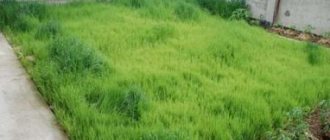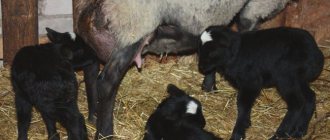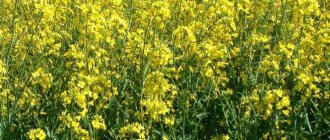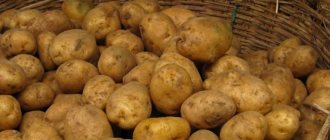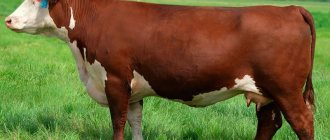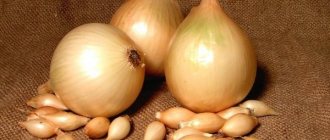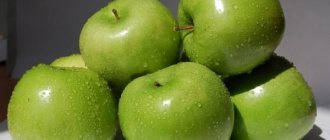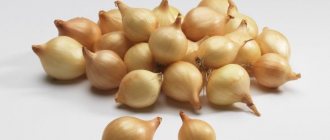The rapeseed plant is a green manure grass that was often used in past centuries. Its capabilities, such as improving soil and fertility, have been known since Roman times. Treating it like an ordinary weed is a mistake.
Because a representative of the cruciferous family helps vegetable, fruit and berry crops obtain the necessary microelements. But there is a nuance: you cannot use it before planting radishes, radishes and cabbage. Such a neighborhood is especially harmful for beets, since the nematode quickly destroys the future harvest.
What are the value and disadvantages of this plant?
In agriculture, rapeseed is considered an effective natural fertilizer. It grows quickly, building up a large root and green mass. After it is embedded in the soil, all mineral elements end up in the soil. In terms of the amount of accumulated nitrogen, rapeseed is second only to legumes.
The benefit also lies in the fact that soil fertility increases, vegetables or other crops planted afterwards consume these nutrients, which is the purpose of using rapeseed as a fertilizer. It has 2 varieties - spring and winter, which means that it can be sown both in spring and before winter. The winter variety is cold-resistant and tolerates soil freezing well; the spring variety can be sown several times a season.
The roots loosen the soil, improve its health, reduce the number of soil pests, but attract earthworms. They strengthen the soil and prevent it from being washed away by melt water. Rapeseed plants prevent the growth of weeds, thereby clearing the area of them and making the grower’s work easier. Mowed, serve as natural mulch.
Disadvantages of green manure: does not grow well in acidic or heavy soils, does not like waterlogged soil. It cannot be sown after cruciferous crops and clover, because they have common diseases.
Sowing spring species - rules and timing
Spring varieties of rapeseed, sown in spring, are less demanding on sowing dates. The only caveat is that at the first stage of growth, plants require cold, so it is preferable to sow in March - April. The technology and planting scheme are the same as in the case of the winter species. Shoots appear on days 4–5.
The yield of spring varieties is significantly lower; the plants are one tall stem, and a leaf rosette is not formed. Some gardeners practice planting winter varieties of rapeseed in the spring in order to obtain the maximum amount of green fertilizer. In this case, sowing is postponed to April.
Spring rapeseed is incorporated into the soil after the pods appear. This is approximately 100 days after sowing. If you mow the plantings when they reach a height of 10–15 centimeters, then new stems will soon grow from the roots.
The disadvantages of spring rape are that green manure takes up the usable area of the land in the summer season and, unlike the winter variety, requires watering. In order to increase the effectiveness of green fertilizers, it is recommended to use a mixture of seeds of green manure crops. Together with it, for example, white mustard, oily radish and vetch grow well. It is good to plant rye before winter.
Which crops are best to sow in front of?
Rapeseed as green manure is grown in 2 varieties: intermediate and main. In the first case, the crop is planted after mowing the mass in the spring or during the green manure sowing season, in the second, the use of the green manure crop takes 2 years. This is done to restore the soil.
It is planted in front of potatoes to disinfect the soil and destroy scab pathogens. It is sown in front of cucumbers, other pumpkins, in front of tomatoes and peppers, also to disinfect the soil.
Rapeseed seeding rate
The rate of rapeseed cultivation is influenced by various factors: climatic conditions, amount of moisture in the soil, type and quality of processing, sowing time. In the Kaliningrad region, 40-45 plants per square meter are considered the norm. In the Central Black Earth region it is better to sow 60-65 pieces per square meter.
Planting a crop too often is dangerous, as this will lead to the extension of the central shoot. Side shoots will develop poorly and fewer pods will form. Green manure will lie down, which will complicate harvesting and lead to crop losses.
For successful overwintering, winter rapeseed should be sown at a rate of 40-60 pieces per square meter. For spring crops, plant 45-55 plants per square meter.
When and how to sow green manure
You can sow in open ground in the fall after harvesting, about 2 months before the onset of cold weather, or in early spring, as soon as the snow melts so that the plants can grow, they can be mowed and dug up before planting the seedlings in the ground. Winter rapeseed can grow several times during the season; the last time, in the fall, it is mowed, and the mass is embedded in the soil at least 15 cm deep.
Spring rape can be sown both in spring and autumn. Vegetables are planted 2 weeks after mowing green manure. Green manure is sown in a greenhouse in the fall after harvesting the previous crop, and in the spring at least 2 weeks earlier than in open ground.
Sowing is carried out in prepared soil: first, all plant debris is removed from the site, then the soil is dug up and leveled. You need to sow rapeseed in furrows 2-3 cm deep, leaving a distance of 15 cm between them. Mix the seeds with sand and sow with a density of 1.5-2 g per 1 square meter. m. Level the rows with a rake to cover them with soil.
What does Rapeseed look like?
Rapeseed is an annual plant of the cruciferous family, a natural hybrid. There are two types: spring and winter.
The root of the crop is about 40 cm long. The main root of green manure branches horizontally. From the main stem there are 20-30 branches of the first order. The ground part grows up to 2 meters high, the branches are straight. The cross section is 3 cm. They are green or gray and have a waxy coating.
There are three types of leaves on the branches. Below, on the ground, they have a round, uneven shape, collected in a rosette. But only the winter species has a rosette. In the middle are spear-shaped leaves. In the uppermost part, the leaves are widened at the base and narrowed towards the edge. Like the stems, the leaves have a waxy coating. The color may be purple or blue-green.
Small, lemon-colored flowers are collected in inflorescences. The fruit is a pod more than 10 cm long. Each pod contains up to 30 small, dark-colored seeds. The grains of spring rapeseed are slightly smaller than those of winter rapeseed. Thus, the mass of a thousand spring seeds reaches 5 g, and winter seeds – 7 g.
Rapeseed seeds do not lose their quality for 6-7 years.
Useful article:
What are green manures?
Optimal timing of mowing green mass
Mow it when the plants reach at least 20 cm in height. You can leave the plants to grow further, but be sure to remove them before flowering, when the shoots and leaves begin to coarse. The mass can be dug up and embedded in the ground, or left on the surface as mulch. To speed up decay, it must be watered with a solution of the EM preparation. After this, you need to plant vegetables or other crops at least 2 weeks later, when the grass has already begun to rot.
What time is rapeseed harvested?
We have explained to you the timing of sowing and caring for rapeseed crops. Now let's talk about harvesting rapeseed. It is recommended to mow the crop rather than dig it up. In terms of mowing time, they focus on the main crop. If there is a plan for planting the main crop in the current season, then rapeseed is mowed even when it has only reached 20 centimeters. It is recommended to do this with mown rapeseed: either plow 6-12 cm, or make compost out of it. Literally after a couple of weeks, the seeds of the main crop are planted. If there are no such plans, then the green mass is removed when the plant is 10-12 centimeters high. It is restored in a short time and will produce greens again. Therefore, for the second time, rapeseed is mowed at the root as soon as the pods appear. Then the biomass will be more valuable for nutrients.
Winter rapeseed
Crescent, from the same family as rapeseed, is considered a less capricious plant, which is why it is often used as an effective green manure. The most common winter plant is revered for its high resistance to cold and early ripening. It is possible to plant mown rapeseed greens a little earlier than rapeseed, therefore, subsequent crops can be planted much faster.
It is important to note that the yield of rapeseed is not as high as that of rapeseed, but this plant is less demanding on the soil. Another plus is that you can sow the crop even at the end of September or at the beginning of October, when the area is already completely clear of ripe vegetables.
Advantages of fertilizing with green manure
Advantages of green manure plants, including vetch, over manure or purchased mineral fertilizers:
- The reason is economic: if you do not have a diversified farm where large and small livestock or poultry can provide manure, then you will have to buy it. Price – from 100 rubles for a standard bag for 6 buckets. Calculate your need and multiply by tons.
- Ecological. You don’t know from which animals their “good” will be brought to you. Will there be pig manure, which is extremely aggressive? Is the manure aged, that is, sufficiently rotted? For a guarantee, many people put what they bought in a bunch and keep it at least until next spring - completely excluding organic matter from circulation for this year, when it is so needed.
- Medical. You cannot know what parasites may be in the delivered batch of manure.
- Agrotechnical. Green manure plants perfectly loosen even the heaviest, loamy soil, which even mechanical treatment cannot bring to the proper condition. To be clear: the main root is embedded in soil of any density to a depth of 2 meters. Lateral roots - up to 70 cm wide. When the vetch is planted tightly, you can imagine what is happening at depth, even in a clay monolith.
Well, judge for yourself: you turned over a layer of clay with a plow or shovel, broke it into small pieces with a rake, or even sifted it through a lattice with a mesh side of 0.5-1.0 cm to create acceptable particles. So what? The very first rain blinds it all back into a lump of plasticine. The rhizomes of green manure will perfectly break the clay monolith into separate small blocks, and rotted smaller roots and buried above-ground parts will add sticky organic matter to the soil - the result of decomposition.
Beekeepers willingly sow vetch around their apiaries; it is not for nothing that it has the reputation of being a good honey plant. Honey collected on vetch plantations is classified as flower honey; it is thick, light, transparent and has a peculiar astringent taste, which buyers really like.
Rapeseed care
Rapeseed is a hardy and undemanding crop that can grow under the most unfavorable conditions. Achieving high yields and oil content of seeds is possible only if agrotechnical requirements are met, and largely depends on weather conditions.
Features of watering
Rapeseed is very moisture-loving. During the growing season, it consumes 1.5-2 times more water than grain crops. But it does not tolerate high groundwater levels. Rapeseed is not planted in overly moist and swampy areas located in lowlands and prone to frost.
The crop must have enough precipitation and moisture stored in the soil. It is important that the plants receive moisture in the first 70 days - it is during this period that about 70% of the harvest is formed. From flowering to ripening, rapeseed requires 300 mm of rainfall.
Weed control
Fields where rapeseed grows must be cleared of perennial weeds. The fight against them depends on the degree of infestation and the type of crop.
Weed control when growing rapeseed:
- Winter. If the soil is clogged with weeds, it is treated with herbicides 1.5 months before sowing. Chemical treatment is carried out at a temperature of +15...+20°C and a wind speed of no more than 5 m/s. If these conditions are not met, the effectiveness of chemical weeding is significantly reduced.
- Yarovoy. After heavy rains (but no later than 4 days after sowing), the field is harrowed.
This is done only in dry weather. The harrows are moved diagonally across the field. In the 2-3 phase of a true leaf, another harrowing is carried out - post-emergence. This time the harrows move at an angle of 90 degrees to the direction of the crops.
When seedlings appear, agronomists count them to develop tactics and means of weed control. To do this, frames measuring 50 x 59 cm are placed diagonally across the rapeseed field at regular intervals to count the number of weeds inside them and determine their types.
The following weeds are especially common in rapeseed fields:
- dodder;
- wheatgrass;
- field poppy;
- chicken millet and other rapeseed competitors.
Preparations used to control weeds:
- Roundup, Glysol and their analogues. The products are used in the warm season. They destroy dicotyledonous plants and perennial cereals.
- Treflan. The fields are cultivated before sowing. The drug or its analogues are embedded in the ground. The drug is effective against annual cereals and dicotyledonous plants.
- Butizan. Used after emergence. Acts on the same weeds as Treflan.
- Fusilade is super. Apply in autumn and early spring. Destroys wheatgrass.
- Lontrel. Treatment is carried out when 3-4 leaves appear on the plants. Destroys chamomile and sow thistle.
Diseases
Basically, the crop suffers from fungal infections, which reduce the yield and oil content of the seeds. Main diseases of rapeseed:
- Powdery mildew. The plant is covered with a powdery coating. The disease at the later stages of rapeseed development leads to a decrease in yield.
- Alternaria blight. Affects all parts of the plant. Black spots appear on them, leading to the death of rapeseed. The disease most affects flower stalks.
- Fomoz. Dangerous for all plants of the Brassica family. Causes blackening of the stem and black spotting. Gradually covers the entire plant and leads to its death.
Rapeseed also suffers from white rust, root bacteriosis, clubroot, black leg, white rot and other diseases.
A universal means of combating diseases is the use of benzimidazole drugs (d.v. carbendazim). Benomyl-based fungicides also help control diseases.
Pests
When growing rapeseed, insect pests pose a particular danger, as they not only damage the plants, but also completely destroy them. The crop is harmed by both polyphagous insects (all kinds of butterflies that attack cruciferous crops) and pests that “specialize” only on rapeseed.
The most dangerous pests:
- Rapeseed flower beetle. The beetles are black in color with a blue-green metallic tint. Its larvae and adults are harmful. Pests eat the buds, late larvae eat the pods.
- Rapeseed leaf beetle. The main damage is caused by the imago. The beetles are red and black with stripes. The larvae are brownish and bristly. The insect causes harm at all stages of its development. It eats the plant from the flowering period until the pods appear.
- Rapeseed sawfly. Orange beetle with black spots. The false caterpillar, which feeds on leaves, flowers, and pods, is harmful.
- Cabbage scoop. The butterfly is gray-brown, widespread and affects almost all crops. Green-black caterpillars that eat leaves also cause damage.
- Cruciferous flea beetle. The damage is caused by beetles and larvae that eat away the leaves. If the weather is hot and dry, the pest can destroy seedlings within a day.
List of some types of drugs to combat insects that attack rapeseed:
- Nurimet Extra. A universal 2-component insecticide that causes the death of insects within 3-7 hours. Destroys cruciferous flea beetles, flower beetles and other pests.
- Newstar. An environmentally friendly insecticide that kills sucking and leaf-eating insects. The flower beetle dies almost instantly. Apply during the growing season.
- Fostran. Systemic insecto-acaricide that destroys pests within a few hours. Apply at the stage of germination and the appearance of the first leaves.
conclusions
Both types of rapeseed cope well with the task assigned to them: improving the composition of the soil. Tired soil is quickly filled with the necessary supply of micro- and macroelements.
An additional advantage of using rapeseed is disinfection against infection and parasitic insects.
Rapeseed is classified as a green fertilizer. It supplies the soil with organic matter, has a positive effect on its structure and increases fertility. It also helps fight harmful insects and diseases. Therefore, both on large plantations and on private plots, it is often used as a green manure crop.
Specifics of sowing winter rapeseed
The winter version is the most popular and cultivated type of rapeseed. It is considered to be quite picky about the condition of the soil: it does not grow in soil with an alkaline reaction and is more difficult to tolerate low temperatures. At the same time, green manure has significant advantages over spring rape:
- much more productive;
- better saturates the soil with nitrogen and phosphorus;
- saves the gardener’s time in the spring: when planted in the fall, it overwinters well and eliminates the need for re-seeding, while it begins to grow earlier and forms green mass faster;
- living rapeseed mulch prevents severe freezing of the ground and preserves its structure;
- successfully retains snow and helps retain moisture, which is especially important during spring work;
- retains all useful substances that could be lost along with melt water.
Landing dates
Winter crops are sown after vegetable crops on cleared soil. The time for sowing rapeseed is in autumn.
In warmer southern regions, plants are sown mainly in September.
In central Russia and Belarus, sowing begins in the third ten days of August.
It is important to consider the timing of planting so as not to plant too early. In this case, the root rosette of green manure will overgrow, and this can lead to increased sensitivity to cold and disease.
Winter green manure should be planted in such a way that before the onset of the first frosts, the rapeseed already has a formed rosette and grows no lower than 25 cm. In the fall, this process will take about two months. Otherwise, in the spring, rapeseed will not produce such a rich harvest of green mass.
With the onset of spring, at temperatures above +3 °C, the plant begins to awaken, starts the growing season and blooms in the second half of May.
Care
When planted in the fall as green manure from rapeseed, maximum efficiency can be achieved. In general, the culture does not require special care. You just need to avoid planting in the ground, where stagnant water can form. The winter species is picky about soil quality and does not produce a good harvest on sandstone and loam. The plant takes root quickly enough, gains green mass and after a month can begin to bloom.
At the same time, rapeseed can withstand the first autumn cold without problems. Cold-resistant varieties survive at temperatures as low as 20 degrees Celsius, even in snowless winters. The frost-resistant plant, however, has difficulty withstanding the appearance of an ice crust on the surface of the earth, winter thaws, as well as flooding and severe stagnation of moisture.
Beneficial features
Gardeners highly value the ability of rapeseed to quickly produce large volumes of greenery even in cold spring and autumn. The biomass of the crop quickly decomposes, turning into a valuable fertilizer. Thanks to this fertilizing, the soil is enriched with macro- and microelements, organic compounds, and humus. Rapeseed is inferior to legumes only in terms of the percentage of nitrogen content.
In terms of nutritional value, rapeseed can easily compete even with manure. In addition, green manure contains essential oils that repel pests and fight pathogenic soil microflora.
Rapeseed suppresses weeds; it can often be found in the aisles of perennial flowers, berry fields, and under fruit trees. Green manure crops bind nitrates, reducing the percentage of their leaching.
- The abundant greenery of green manure supplies the soil with phosphorus, sulfur and other microelements and organic substances. All this helps to increase productivity on the site.
- Well-developed rhizomes penetrate up to 2 m deep, transferring nutrients from deep to surface layers.
- Rapeseed disinfects the soil and blocks the development of diseases.
- Spring varieties protect the soil from erosion.
Green manure Vika
Advantages and disadvantages of wiki as green manure
Vetch grown as green manure has a number of advantages:
- Precocity. Winter vetch manages to produce a harvest before vegetable seedlings are planted.
- Increasing soil fertility. Nodules with nitrogen-fixing bacteria, which have the ability to accumulate nitrogen, form on the roots of the plant.
- Improving soil structure. When embedded in the ground, vetch improves air and moisture capacity.
- Health improvement. When decomposed, it serves as food for soil microorganisms and worms.
- It does not require heat; +2…+3°C is enough for seed germination.
- Can be grown on all types of soil, except waterlogged, saline and acidic.
- Restrains the growth of weeds.
For spring sowing, a vetch-oat mixture is often used. Cereals increase the amount of green mass per unit area. The vetch-oat mixture, used as green manure, is indispensable for small garden plots where it is impossible to observe crop rotation and crop rotation rules.
The main disadvantage of vetch is that it does not tolerate a lack of moisture. In dry years, it gives poor growth of green mass and ages early, without having time to form full-fledged plants.
Spring and winter vetch - preferred cultivation
This species is very sensitive to hot weather; without moisture it will not grow in acidified soil. The green manure vetch plant does not like this, and at the same time it responds to a decrease in the volume of herbs, which is why there is less humus.
The earth also needs constant good fertilizer, careful weeding, the earth cannot live without vitamins, it also needs to be additionally treated with special preparations that contain useful substances, but not so often, this cannot be neglected. You don't have to use these fertilizers because there are micronutrients and a lot of nitrogen living on the grain pods down there, and that's not so good for the grass. But vitamins for the soil will be a big plus; when they are returned to the soil, there will be a good harvest.
It is necessary to use the vetch plant as green manure immediately after harvesting vegetables from the beds and clearing away weeds. Useful minerals can be sprinkled on the ground, watered with warm water, and rake them with a hoe, in the form of a pitchfork. Then the ground needs to be moistened again and the seeds of winter or spring vetch should be planted. In the autumn months, green manure grows twice. Thus, the spring variety is grown at the beginning of September, and after mixing with soil, the winter variety is grown abundantly; sprouts can be expected at the end of April.
The optimal time of year for growing green manure is September, because in winter all substances can rot, and this will make a good fertilizer with vitamins for the soil.
Growing days in the first and second halves of the year.
Early plantings are planned for the beginning of spring, for example the beginning of April, when everything melts and there is a lot of water. In northern cities, only winter vetch is planted in March.
Every warm month of summer you can harvest, clean and plant your garden with fresh seeds. All green sprouts will appear instantly, but you need to constantly moisten the soil. By repeating this three times, planting and making fertilizer, the earth itself revives the soil.
Due to the abundant amount of substances for the harvest, such grass is suitable for excellent humus. You can also buy special fertilizers and minerals in the store to nourish the soil, this is suitable for those who do not have livestock, pigs, chickens, but this is not so profitable. The humus contains no harmful substances, which is so necessary for the creation of the root system, so it must be supplemented with nutrients.
Which crops are best to sow in front of?
Vetch can be the predecessor of almost all vegetable and green crops:
- pepper;
- tomatoes;
- beets
- potatoes;
- carrots;
- cabbage
Vetch as a green manure can be sown before planting strawberry and raspberry plantations, before planting fruit trees and shrubs.
For which crops is it not suitable?
It is not recommended to sow vetch before planting crops from the legume family:
- peas;
- beans;
- lentils.
The presence of a number of similar diseases and pests will contribute to their spread.
Green vetch: when to sow and how
A real gardener carefully chooses the option of making humus in the soil. This does not require any plowing skills, because the green manure does everything on its own. Thus, mineral substances penetrate far into the soil and independently live their own lives.
Plowing the soil can help with heavy soil that is difficult to shovel when initially growing herbs for fertilizer. The soil is not plowed deeply, as the grass roots will do everything themselves.
Experts in the science of agronomy do not remove the first shoots, but dig holes for the sprouts of tomato seedlings and other vegetables. Tall inflorescences protect the sprouts from whirlwind, heat and frost. The harvested vetch herbs are spread on the ground next to the seedlings, this warms the soil, they protect against frost and the growth of excess weeds.
Combination of herbs – cereals and vetch
The combination of such herbs contributes to the good growth of green manure, because the grains quickly grow to the top, protect the legumes, so they grab onto neighboring sprouts with their thin tentacles in order to reach higher to the sky, to the sunlight, and so they grow.
In September, such herbs bloom together, but in November the cereals decompose and help fertilize the land, and the vetch simply overwinters without harming itself, and in March it begins to grow again. With the help of fresh air on the bean stalks closer to the ground, the plant feeds, then the process of humus occurs, after which the legumes feed on it, in return the soil receives all the useful minerals.
Cereals (oats, millet, corn) and vetch are used equally. Vetch is combined not only with grains, but also with perennial rye, as well as with plants of the cabbage genus. They combine different herbs, for example, vetch with perennial tares and wheat, oats and others. Such a connection is perfectly used in the form of constant progress for the speedy revitalization of emasculated areas.
Green manure vetch: photo
What is the best way to bury green manure in the soil?
Cut off spring vetch sprouts during the budding period, 30-40 days after planting. Cut the above-ground part of the plant just below ground level and chop it.
To make green manure quickly turn into fertilizer, water it with a special biological preparation for compost. Dig up the area along with the green mass.
Experienced gardeners use cut greens for compost and mulch the soil with it. The roots of the plant are left in the ground, the ground is not dug up.
Mistakes when growing rapeseed
Incorrect agricultural technology immediately affects the condition of rapeseed crops, leading to diseases, reduced yields and other troubles. Errors and their consequences:
- Poorly prepared soil and seed beds. Uneven development of plants. In winter rapeseed, overgrown and underdeveloped specimens die during wintering.
- The seeds are deeply embedded. Germination delay. Weakened plants. Extending the root collar. There is a risk of not surviving the winter.
- The straw remains of the predecessor were poorly sealed. The seedlings, falling into the straw, stretch out.
- The sowing norm has been exceeded. Due to the density, the plants develop poorly and few pods are formed.
- Excess nitrogen fertilizers. Overgrowth of plants. Fragility and brittleness of stems, lodging. Winter rapeseed risks not surviving the winter.
- Crop rotation violation. Spread of pests and diseases.
Rapeseed is a promising crop in which the interest of both consumers of agricultural products and farmers themselves is constantly growing. The technology for cultivating winter and spring rapeseed has its own nuances, but in both cases the farmer is required to pay close attention to the precise implementation of agricultural technology.
0
0
Copy link
conclusions
Rapeseed is a versatile plant that can be used for many purposes - in cooking, as a source of protein, for feeding poultry and animals. By following simple rules, you get cheap fertilizer, which can be compared in effectiveness to manure.
Did you like the article? Share with your friends:
Hello, dear readers! I am the creator of the Fertilizers.NET project. I am glad to see each of you on its pages. I hope the information from the article was useful. Always open to communication - comments, suggestions, what else you want to see on the site, and even criticism, you can write to me on VKontakte, Instagram or Facebook (round icons below). Peace and happiness to everyone!
